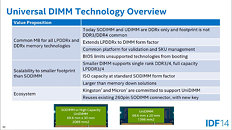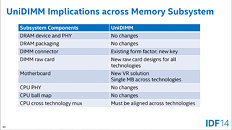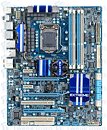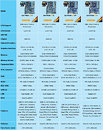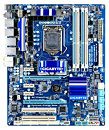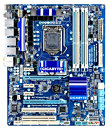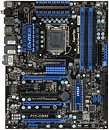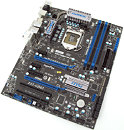Apr 19th, 2025 00:34 EDT
change timezone
Latest GPU Drivers
New Forum Posts
- (Some of) What I'd like to See From a Final Fantasy IX Remake (29)
- New PC: Instability and unexpected shutdowns when gaming. (7)
- I have a dual bay pump reservoir combo question (1)
- AsRock 9070 XT Taichi BIOS confusion (3)
- Looking for 4060 MXM-A VBIOS (13)
- Looking for a rolling workbench recommendation (9)
- GPU Memory Temprature is always high (19)
- RX 9000 series GPU Owners Club (398)
- RTX5000 Series Owners Club (182)
- Dangerous RAM temps? (4)
Popular Reviews
- ASUS GeForce RTX 5060 Ti TUF OC 16 GB Review
- NVIDIA GeForce RTX 5060 Ti PCI-Express x8 Scaling
- Palit GeForce RTX 5060 Ti Infinity 3 16 GB Review
- Teevolution Terra Pro Review
- ASUS GeForce RTX 5060 Ti Prime OC 16 GB Review
- MSI GeForce RTX 5060 Ti Gaming OC 16 GB Review
- Zotac GeForce RTX 5060 Ti AMP 16 GB Review
- MSI GeForce RTX 5060 Ti Gaming Trio OC 16 GB Review
- G.SKILL Trident Z5 NEO RGB DDR5-6000 32 GB CL26 Review - AMD EXPO
- ASRock X870E Taichi Lite Review
Controversial News Posts
- NVIDIA GeForce RTX 5060 Ti 16 GB SKU Likely Launching at $499, According to Supply Chain Leak (182)
- NVIDIA Sends MSRP Numbers to Partners: GeForce RTX 5060 Ti 8 GB at $379, RTX 5060 Ti 16 GB at $429 (127)
- Nintendo Confirms That Switch 2 Joy-Cons Will Not Utilize Hall Effect Stick Technology (105)
- NVIDIA Launches GeForce RTX 5060 Series, Beginning with RTX 5060 Ti This Week (103)
- Over 200,000 Sold Radeon RX 9070 and RX 9070 XT GPUs? AMD Says No Number was Given (100)
- Nintendo Switch 2 Launches June 5 at $449.99 with New Hardware and Games (99)
- Sony Increases the PS5 Pricing in EMEA and ANZ by Around 25 Percent (85)
- NVIDIA PhysX and Flow Made Fully Open-Source (77)
News Posts matching #Lynnfield
Return to Keyword Browsing
Intel Releases "Spectre" Hardening Microcode Updates for "Ivy Bridge" thru "Westmere" Architectures
Intel today released the latest round of CPU micro-code updates for its processors, which expand support for Intel processor microarchitectures ranging all the way back to 1st generation Core "Westmere," and "Lynnfield," and including "Sandy Bridge" and "Ivy Bridge" along the way, at various stages of roll-out (beta, pre-production, and production). This update probably features hardening against "Spectre" variant 4, and perhaps even RSRR (rogue system register read) variant 3A, chronicled in CVE-2018-3640.

Intel Core "Coffee Lake" Lineup Specs Confirmed in Leaked Distributor Event
Intel recently concluded an event intended for local distributors in China, a key presentation slide of which was snapped and posted online. The slide confirms the company's product-stack for the mainstream desktop platform, and its augmentation with the first wave of 8th generation Core "Coffee Lake" SKUs. The slide also confirms that Intel will be replacing current Core i7 4-core/8-thread SKUs with Core i7 6-core/12-thread ones; Core i5 4-core/4-thread SKUs with 6-core/6-thread ones, and Core i3 2-core/4-thread SKUs with 4-core/4-thread ones, marking the biggest fundamental update to the product stack since the Core MSDT family started out a decade ago, with the Core "Lynnfield" and "Clarkdale" processors.
The slide further describes per-core performance increases ranging between 11-29 percent owing to higher clock-speeds and a slightly newer micro-architecture, and 51-65 percent increases in multi-threaded performance owing to the increasing core-counts across the board. While these SKUs are expected to logically replace the various Core "Kaby Lake" SKUs from their current price-points, there could be a tiny price increase, across the board, which Intel could justify using the higher core-counts.
The slide further describes per-core performance increases ranging between 11-29 percent owing to higher clock-speeds and a slightly newer micro-architecture, and 51-65 percent increases in multi-threaded performance owing to the increasing core-counts across the board. While these SKUs are expected to logically replace the various Core "Kaby Lake" SKUs from their current price-points, there could be a tiny price increase, across the board, which Intel could justify using the higher core-counts.

Intel Skylake Microarchitecture Detailed
The "Skylake" CPU microarchitecture is as much important to Intel as "Sandy Bridge" was, a few years ago. It allows Intel to facilitate mainstream adoption of the DDR4 memory standard (with DDR3 backwards compatibility encouraging cheap upgrades), and gives users IPC increases over older architectures. While users of Core "Haswell" processors and reasonably fast DDR3 memory will find "Skylake" a hard-sell, it should look appealing to users of much older chips, such as "Lynnfield," and perhaps even "Sandy Bridge."
The "Skylake" core is bigger than "Haswell," owing to wider pipelines, prefetcher improvements, more execution units, a bigger front-end with a higher-capacity branch predictor, cache optimizations, and an update to the way HyperThreading works. The instruction window is nearly 1.5x the size of Sandy Bridge, with an out-of-order execution window size of 224 (vs. 168 on Sandy Bridge), load/store sizes of 72/56 (vs. 64/36 on Sandy Bridge), 97 scheduler entries (vs. 56 on Sandy Bridge), and an allocation queue size of 64/thread (vs. 28/thread). The platform of "Skylake" is similar to that of its predecessor, with four notable changes - an integrated camera ISP with the chipset, DDR4 memory support, double the chipset bus bandwidth (64 Gb/s), and eDRAM support on certain CPU SKUs.
The "Skylake" core is bigger than "Haswell," owing to wider pipelines, prefetcher improvements, more execution units, a bigger front-end with a higher-capacity branch predictor, cache optimizations, and an update to the way HyperThreading works. The instruction window is nearly 1.5x the size of Sandy Bridge, with an out-of-order execution window size of 224 (vs. 168 on Sandy Bridge), load/store sizes of 72/56 (vs. 64/36 on Sandy Bridge), 97 scheduler entries (vs. 56 on Sandy Bridge), and an allocation queue size of 64/thread (vs. 28/thread). The platform of "Skylake" is similar to that of its predecessor, with four notable changes - an integrated camera ISP with the chipset, DDR4 memory support, double the chipset bus bandwidth (64 Gb/s), and eDRAM support on certain CPU SKUs.

How Intel Plans to Transition Between DDR3 and DDR4 for the Mainstream
The transition between DDR2 and DDR3 system memory types was slower than the one between DDR and DDR2. DDR3 made its mainstream debut with Intel's X38 and P35 Express platforms, at a time when the memory controller was still within the domain of a motherboard chipset, at least in Intel's case. The P35 supported both DDR2 and DDR3 memory types, and motherboard manufacturers made high-end products based on each of the two memory types, with some even supporting both.
Higher module prices posed a real, and higher latencies, posed a less real set of drawbacks to the initial adoption of DDR3. Those, coupled with the limited system bus bandwidth, to take advantage of DDR3. DDR3 only really took off with Nehalem, Intel's first processor with an integrated memory controller (IMC). An IMC, again in Intel's case, meant that the CPU came with memory I/O pins, and could only support one memory type - DDR3. Since then, DDR3 proliferated to the mainstream. Will the story repeat itself during the transition between DDR3 and the new DDR4 memory introduced alongside Intel's Core i7 "Haswell-E" HEDT platform? Not exactly.
Higher module prices posed a real, and higher latencies, posed a less real set of drawbacks to the initial adoption of DDR3. Those, coupled with the limited system bus bandwidth, to take advantage of DDR3. DDR3 only really took off with Nehalem, Intel's first processor with an integrated memory controller (IMC). An IMC, again in Intel's case, meant that the CPU came with memory I/O pins, and could only support one memory type - DDR3. Since then, DDR3 proliferated to the mainstream. Will the story repeat itself during the transition between DDR3 and the new DDR4 memory introduced alongside Intel's Core i7 "Haswell-E" HEDT platform? Not exactly.

14 nm "Broadwell" A True System-on-Chip (SoC)
With the 14 nm "Broadwell" architecture, Intel will take a new step towards integration of the platform-controller hub (PCH) with the CPU, by designing it to be a multi-chip module (with the CPU+northbridge in one die, and PCH on the other). This would make "Broadwell" a true System-on-chip (SoC), which allows over 90 percent of the system's I/O to be routed to the processor socket, including memory, PCI-Express, SATA, USB, etc. Although not the first to the industry with single-chip chipsets and integrated memory controllers, Intel rapidly reshaped the arrangement between CPU and core-logic, over the past four years.
It began with transfer of memory controller from northbridge to CPU die (45 nm "Bloomfield"), and transfer of the entire northbridge to the CPU die (45 nm "Lynnfield"). The graphics northbridge transferred a little more gradually, first as multi-chip module with a separate CPU die (32 nm "Clarkdale"), then complete integration with the CPU die (32 nm "Sandy Bridge"). All through, the southbridge, or I/O controller hub (ICH) remained outside the CPU package, with the addition of a display output logic, it transformed into a "platform controller hub" (PCH), which is still just a glorified southbridge. Naturally then, such a drastic relocation of system components will warrant a socket change.
It began with transfer of memory controller from northbridge to CPU die (45 nm "Bloomfield"), and transfer of the entire northbridge to the CPU die (45 nm "Lynnfield"). The graphics northbridge transferred a little more gradually, first as multi-chip module with a separate CPU die (32 nm "Clarkdale"), then complete integration with the CPU die (32 nm "Sandy Bridge"). All through, the southbridge, or I/O controller hub (ICH) remained outside the CPU package, with the addition of a display output logic, it transformed into a "platform controller hub" (PCH), which is still just a glorified southbridge. Naturally then, such a drastic relocation of system components will warrant a socket change.

2011 Intel Core Processor Pricing and Launch Dates Surface
Back in August, a report with details sourced from ComputerBase.de was bang-on in tabling what the 2011 Intel Core processor lineup is going to look like. With a little over a month to go for the market release of these processors, fresh details emerged that reveal pricing and precise availability dates of each model. To begin with, 9th January is D-day for the socket LGA1155 platform, when one can expect a large wave of motherboards to reach stores, along with 10 new Core i5, Core i7 "Sandy Bridge" quad-core processors.
The quad-core lineup consists of 7 Core i5 models. Based on a Sandy Bridge derivative silicon, these processors differ from the Core i7 models in having no HyperThreading (4 cores/4 threads), and 25% of the L3 cache being disabled (set at 6 MB). The lineup overall is seeing a clock speed increase compared to current-generation "Lynnfield" processors. The Core i5 lineup also includes an overclocker-friendly "K" model, which features an unlocked BClk multipler. The fastest in the lineup is the Core i7 2600/2600K, which is clocked at 3.40 GHz. With the default BClk (base clock) of Sandy Bridge running at 100 MHz (compared to 133 MHz on Nehalem/Westmere), one can expect very high multiplier values. It should also be easier to calculate speeds and keep track of, for overclockers.
The quad-core lineup consists of 7 Core i5 models. Based on a Sandy Bridge derivative silicon, these processors differ from the Core i7 models in having no HyperThreading (4 cores/4 threads), and 25% of the L3 cache being disabled (set at 6 MB). The lineup overall is seeing a clock speed increase compared to current-generation "Lynnfield" processors. The Core i5 lineup also includes an overclocker-friendly "K" model, which features an unlocked BClk multipler. The fastest in the lineup is the Core i7 2600/2600K, which is clocked at 3.40 GHz. With the default BClk (base clock) of Sandy Bridge running at 100 MHz (compared to 133 MHz on Nehalem/Westmere), one can expect very high multiplier values. It should also be easier to calculate speeds and keep track of, for overclockers.

ASRock Designs LGA1156 Motherboard Based on Intel P67 Chipset
ASRock is known to mix and match sockets and chipsets to come up with some interesting hybrids that give users access to latest features offered by the chipset. A recent example of this is a socket 939 motherboard based on the AMD 785G chipset (read here), which gives users of socket-939 Athlons access to a fast IGP and PCI-Express 2.0. The company's latest such innovation is the P67 Transformer. This is a socket LGA1156 motherboard, it supports existing Core i5/Core i7 "Lynnfield", and Core i3/Core i5 "Clarkdale" processors, but is based on the Intel P67 Express chipset. The board gives users access to some advanced features of the P67 chipset, but won't support LGA1155 processors.
So what's in it for you? Well, the P67 PCH embeds a PCI-Express 2.0 hub compared to P55/H55, which pack an older PCI-Express 1.1 hub. The older hub is known to heavily bottleneck devices such as USB 3.0 and SATA 6 Gb/s controllers that use only a single PCI-E lane (since PCI-E 1.1 has 250 MB/s per direction bandwidth, compared to 500 MB/s on the PCI-E 2.0). So significant is this bottleneck, that some motherboard designers even used bridge chips that convert the P55's PCI-E 1.1 x4 port to two PCI-E 2.0 x1, for USB 3.0 and SATA 6 Gb/s controllers. The PCI-E x16 slots however, are wired to the processor and are Gen 2. ASRock's board hence gives you two USB 3.0 and two SATA 6 Gb/s with an alleviated bus bottleneck.
So what's in it for you? Well, the P67 PCH embeds a PCI-Express 2.0 hub compared to P55/H55, which pack an older PCI-Express 1.1 hub. The older hub is known to heavily bottleneck devices such as USB 3.0 and SATA 6 Gb/s controllers that use only a single PCI-E lane (since PCI-E 1.1 has 250 MB/s per direction bandwidth, compared to 500 MB/s on the PCI-E 2.0). So significant is this bottleneck, that some motherboard designers even used bridge chips that convert the P55's PCI-E 1.1 x4 port to two PCI-E 2.0 x1, for USB 3.0 and SATA 6 Gb/s controllers. The PCI-E x16 slots however, are wired to the processor and are Gen 2. ASRock's board hence gives you two USB 3.0 and two SATA 6 Gb/s with an alleviated bus bottleneck.

Intel Releases Core i7 875K and Core i5 655K, Lures Overclockers with Pricing
Intel today rolled out two new high-performance processors aimed at the enthusiast community, which is sure to please users of LGA1156 platform. The release includes the quad-core Core i7 875K, and dual-core Core i5 655K. Based on the 45 nm Lynnfield die, the Core i7 875K is clocked at 2.93 GHz, with a maximum Turbo Boost speed of 3.60 GHz. While having identical clock speeds to the Core i7 870, the 875K comes with a fully unlocked BClk multiplier, which is featured in Extreme Edition processors.
The unlocked multiplier helps with overclocking. Also featured is that the core and DRAM ratios are unlocked so memory bus speeds can be kept independent of the core speed to an extant. The processor retains the TDP rating of 95W, which other Lynnfield-based processors have. It has a monolithic die which houses the processor and northbridge, dual-channel DDR3 memory controller, and PCI-Express root complex. Intel HyperThreading Technology enables 8 logical CPUs for the OS to deal with.
The unlocked multiplier helps with overclocking. Also featured is that the core and DRAM ratios are unlocked so memory bus speeds can be kept independent of the core speed to an extant. The processor retains the TDP rating of 95W, which other Lynnfield-based processors have. It has a monolithic die which houses the processor and northbridge, dual-channel DDR3 memory controller, and PCI-Express root complex. Intel HyperThreading Technology enables 8 logical CPUs for the OS to deal with.

Corsair Launches Outrageously Fast GTX 2533 MHz DDR3 Memory
Corsair, a worldwide supplier of high-performance PC components, today announced the launch of the Dominator GTX4, a new ultra-high-speed module with operation guaranteed up to 2533 MHz. These modules are available immediately, in limited quantity, from the Corsair Online Store.
Producing modules that perform at these extraordinary speeds requires an extremely meticulous, manual screening process, and each module represents the fastest thirty-two RAMs out of literally thousands of candidates. Each RAM chip is individually screened and graded for performance. The top few percent are set aside for assembly onto GTX4 modules, the balance are returned to normal manufacturing. Modules are then carefully assembled using these premium ICs, and only the fastest make the GTX grade. For an inside look on how this screening is done, click here.
Producing modules that perform at these extraordinary speeds requires an extremely meticulous, manual screening process, and each module represents the fastest thirty-two RAMs out of literally thousands of candidates. Each RAM chip is individually screened and graded for performance. The top few percent are set aside for assembly onto GTX4 modules, the balance are returned to normal manufacturing. Modules are then carefully assembled using these premium ICs, and only the fastest make the GTX grade. For an inside look on how this screening is done, click here.

Intel Readying Core i7 875K and Core i5 655K Overclocker-Friendly LGA1156 Processors
Intel carved out high-end socket LGA1156 processors such as the Core i7 800 series, just so people opting for the LGA1156 also have the headroom to upgrade to high-end parts without having to switch to the more powerful LGA1366 platform with its Core i7 900 series processors. There are four parts in the performance-enthusiast (>$250) segment: Core i5 670 dual-core, Core i7 860 and Core i7 870 quad-core. With the possible advent of more powerful socket AM3 processors from AMD, notably the Phenom II X6 series with its overclocker-friendly Black Edition parts, Intel seems to be finding a need to expand its LGA1156 series a little.
In the works are the Core i7 875K quad-core, and Core i5 655K dual-core. Being careful as to not label them "Extreme Edition" chips (since the "Extreme Edition" moniker seems to be clearly demarcated for the LGA1366 platform and the market segment by that name), Intel gave these chips the "K" brand identifier. Last summer, Intel released the Pentium Dual-Core E6500K to select markets. Similar to that, the Core i7 875K and Core i5 655K are overclocker-friendly chips that come with unlocked BClk multipliers (much like the Extreme Edition chips).
In the works are the Core i7 875K quad-core, and Core i5 655K dual-core. Being careful as to not label them "Extreme Edition" chips (since the "Extreme Edition" moniker seems to be clearly demarcated for the LGA1366 platform and the market segment by that name), Intel gave these chips the "K" brand identifier. Last summer, Intel released the Pentium Dual-Core E6500K to select markets. Similar to that, the Core i7 875K and Core i5 655K are overclocker-friendly chips that come with unlocked BClk multipliers (much like the Extreme Edition chips).

Upcoming Intel Core CPUs Detailed
Intel is poised to release new performance and high-end processors across its various Core family brands, within Q1 2010 and later. OCWorkbench, citing sources in Japan, released tentative release dates and information of new Core family processors. Among a few known names such as the six-core Core i7 980X, there are a few new ones. Details and dates are as follows:
- Core i7 980X "Gulftown": six-core, LGA-1366, 3.33 GHz (turbo: 3.60 GHz), March 16
- Core i7 970 "Bloomfield": quad-core, LGA-1366, 3.33 GHz (turbo: 3.46 GHz), Q3, 2010
- Core i7 930 "Bloomfield": quad-core, LGA-1366, 2.80 GHz (turbo: 3.06 GHz), February 28
- Core i7 880 "Lynnfield": quad-core, LGA-1156, 3.06 GHz (turbo: 3.73 GHz), Q2, 2010
- Core i5 680 "Clarkdale": dual-core, LGA-1156, 3.60 GHz (turbo: 3.80 GHz), Mid-May
- Core i3 550 "Clarkdale": dual-core, LGA-1156, 3.20 GHz, Q2, 2010
- Pentium E6700 "Wolfdale-2M": dual-core, LGA-775, 3.43 GHz, Q2, 2010

G.Skill Releases the World’s Fastest DDR3 2200 CL7 Memory Modules
G.Skill International Co. Ltd., manufacturer of extreme performance memory and solid-state storage with solid quality, has today released the world's fastest DRAM modules rated at a groundbreaking DDR3 2200 CL7-10-10-28 1.65V 4GB (2GBx2), and specially tuned for Intel Lynnfield Core i7 870, 860 processors.
Furnished with the brand new design PI series heatspreader, these modules once again represent G.Skill's commitment to pushing the boundaries and providing overclocking enthusiasts and extreme gamers with the best DRAM modules for breaking overclocking world records. The kits will be sold with G.Skill's Turbulence memory fan to decrease the system temperatures and provide further overclocking headroom during tweaking.
Furnished with the brand new design PI series heatspreader, these modules once again represent G.Skill's commitment to pushing the boundaries and providing overclocking enthusiasts and extreme gamers with the best DRAM modules for breaking overclocking world records. The kits will be sold with G.Skill's Turbulence memory fan to decrease the system temperatures and provide further overclocking headroom during tweaking.

Intel Readies P55 Chipset B3 Stepping Update
Intel's is readying a hardware update for its P55 Express chipset, currently the only core-logic for the company's brand new socket LGA-1156 processor platform. The new B3 stepping of the P55 PCH will bring with it a little more than new MM number and S-spec numbers. A list of changes is as follows:
- New MM number and S-spec numbers for the converted products;
- Firmware and minor BIOS updates are required with the conversion;
- Processor MRC/microcode update required to enable future processors;
- Recommended storage driver upgrade from Intel MSM 8.9 to Intel RST 9.5.

Gigabyte Readies GA-P55A-UD7 to Lead P55A Series
Closely trailing the GA-X58A-UD7, Gigabyte is preparing a new high-end socket LGA-1156 motherboard based on the Intel P55 chipset. The GA-P55A-UD7 is touted to lead the new pack of motherboards under the P55A series, which bring technologies such as USB 3.0 and SATA 6 Gb/s integrated for the LGA-1156 platform. Observantly, after a very long time, Gigabyte has made use of an NVIDIA nForce chip on its high-end motherboards, certainly the first time it has made use of the nForce 200 PCI-Express bridge chip. Gigabyte made some clever use of its real-estate, especially with regards to the PCI-Express bandwidth.
The LGA-1156 socket is powered by a 24+3 phase circuit. It connects to four DDR3 DIMM slots for dual-channel memory. Its PCI-Express 2.0 x16 link is wired to an NVIDIA nForce 200 chip, which gives out 32 PCI-Express 2.0 lanes to ensure support for 3-way NVIDIA SLI, ATI CrossFireX is naturally supported. There are three PCI-Express x16 slots (which arrange into x16, x16, NC; or x16, x8, x8, depending on how they're populated). A PLX-made PCI-Express bridge chip (probably connected to the PCH) ensures full-bandwidth PCI-Express 2.0 x1 connections to the NEC two port USB 3.0 controller, and the two port SATA 6 Gb/s controller made by Marvell. Apart from the six (color-coded blue) SATA 3 Gb/s ports the PCH provides, the two color-coded white ports on the south are SATA 6 Gb/s, while the two on the north are connected to a Gigabyte GSATA2 SATA 3 Gb/s controller, which also gives out an IDE connector.
The LGA-1156 socket is powered by a 24+3 phase circuit. It connects to four DDR3 DIMM slots for dual-channel memory. Its PCI-Express 2.0 x16 link is wired to an NVIDIA nForce 200 chip, which gives out 32 PCI-Express 2.0 lanes to ensure support for 3-way NVIDIA SLI, ATI CrossFireX is naturally supported. There are three PCI-Express x16 slots (which arrange into x16, x16, NC; or x16, x8, x8, depending on how they're populated). A PLX-made PCI-Express bridge chip (probably connected to the PCH) ensures full-bandwidth PCI-Express 2.0 x1 connections to the NEC two port USB 3.0 controller, and the two port SATA 6 Gb/s controller made by Marvell. Apart from the six (color-coded blue) SATA 3 Gb/s ports the PCH provides, the two color-coded white ports on the south are SATA 6 Gb/s, while the two on the north are connected to a Gigabyte GSATA2 SATA 3 Gb/s controller, which also gives out an IDE connector.

ASRock Intros Entry-Level P55 Motherboard
ASRock introduced a new entry-level, low-cost P55DE3 socket LGA-1156 motherboard, based on the Intel P55 chipset, supporting Intel Core i5 and Core i7 "Lynnfield" processors. Its simple design employs a 4+1 phase power circuit for the CPU VRM, four DDR3 memory slots to support up to 16 GB of memory, that boast of support for DDR3-2400+ by overclocking, two PCI-Express x16 slots, of which the second (orange) slot wired to the P55 PCH and provides electrical PCI-E x4 connection, and two each of PCI-E x1, and PCI. Two of the chipset's six SATA 3 Gb/s ports are permanently assigned as eSATA, with four available internally. The CPU socket area provides mounting holes for LGA-1156 and LGA-775 coolers. Gigabit Ethernet and 8-channel HD audio make for the rest of it. The ASRock P55DE3 is selling for as little as 87 EUR.

Gigabyte Details the P55A Series Motherboards, Support USB 3.0 and SATA 6 Gbps
Gigabyte's embracing new technologies such as USB 3.0 and SATA 6 Gbps in making motherboards has taken the shape of an entire series of motherboards, which intends to cover every price point the company was eying with its large socket LGA-1156 motherboard lineup. The series is designated by GA-P55A before the model identifier. The series is lead by the high-end GA-P55A-UD6, followed (in order) by GA-P55A-UD5, GA-P55A-UD4P, GA-P55A-UD4, GA-P55A-UD3P, GA-P55A-UD3R, and GA-P55A-UD3. All of these are ATX motherboards. Some of these, such as the UD4s, UD5, and UD6, are multi-GPU friendlier with PCI-Express 2.0 x16 slots that split into x8, and share 8 lanes with the next slot, while in lower models, the second PCI-E x16 slot is electrical x4, and wired to the P55 PCH. In all these motherboards, the SATA 6 Gb/s ports are two in number, and are color-coded white. Similarly, USB 3.0 ports on all these models are two in number, and color-coded blue, located on the rear-panel. These motherboards support socket LGA-1156 processors from Intel, currently available as the quad-core Core i5, and Core i7 "Lynnfield" series. It remains unclear whether all of these new models replace the existing GA-P55 series motherboards (that lack USB 3.0 and SATA 6 Gb/s) from the market, or somehow coexist at slightly higher price-points. What is certain however, is that you need to pay attention to the model names, and look out for P55A in the model names, since the rest of the nomenclature is identical. Detailed specifications are found in the specs sheets below.

Energy-Efficient Intel Core i5, Core i7 ''Lynnfield'' Processors Overclocked
In the run up for Intel's Core i5 and Core i7 "Lynnfield" socket LGA-1156 processors, it was known that Intel will be trailing the launch with a few energy-efficient variants, that come with lower rated TDPs. Two of these, namely Core i5 750S, and Core i7 860S have made it to Coolaler's lab for a quick check up. Unlike other energy-efficient variants from Intel, in the past, such as Core 2 Quad Q9550S, these parts feature lower clock-speeds compared to their standard counterparts.
The Core i5 750S comes with a clock speed of 2.40 GHz (19.0 x 133 MHz) with a Turbo Boost speed of 3.20 GHz, and the Core i7 860S runs at 2.53 GHz, with 3.46 GHz of Turbo Boost speed. Both processors as a result, have lower TDPs of 82W, compared to 95W on the Core i5 and Core i7 "Lynnfield" processors currently in the market. They are slated for Q1 2010. Coolaler used the Turbo Boost mode to overclock these chips. The Core i7 860S with its Turbo Boost multiplier of 26.0, reached 4.536 GHz (26 x 174.47 MHz, vCore at 1.32V), while the Core i5 750S reached 3.441 GHz (24 x 143.4 MHz, vCore at 1.32V). Both were seated on an ASUS P7P55D Deluxe motherboard, with one 2 GB DDR3 memory module.
The Core i5 750S comes with a clock speed of 2.40 GHz (19.0 x 133 MHz) with a Turbo Boost speed of 3.20 GHz, and the Core i7 860S runs at 2.53 GHz, with 3.46 GHz of Turbo Boost speed. Both processors as a result, have lower TDPs of 82W, compared to 95W on the Core i5 and Core i7 "Lynnfield" processors currently in the market. They are slated for Q1 2010. Coolaler used the Turbo Boost mode to overclock these chips. The Core i7 860S with its Turbo Boost multiplier of 26.0, reached 4.536 GHz (26 x 174.47 MHz, vCore at 1.32V), while the Core i5 750S reached 3.441 GHz (24 x 143.4 MHz, vCore at 1.32V). Both were seated on an ASUS P7P55D Deluxe motherboard, with one 2 GB DDR3 memory module.

G.Skill Announces its ECO Memory, DDR3 at Just 1.35V
G.Skill International Co. Ltd., manufacturer of extreme performance memory and solid-state storage with solid quality, has today released its ECO low voltage, 1.35V dual channel DDR3 memory for Intel Lynnfield Core i5 and Core i7 platforms.
Compared to the current DDR3 standard voltage of 1.65V, G.Skill's ECO memory modules require 18% less VDIMM. This can have a great contribution to power efficiency, environmental friendliness and ultimately saves G.Skill customers money. In addition, the lower voltages decreases a system's operating temperature, resulting in improved stability. G.Skill's own internal lab tests have revealed, 1.35V memory modules produce 16% lower temperatures than standard 1.65V memory.
Compared to the current DDR3 standard voltage of 1.65V, G.Skill's ECO memory modules require 18% less VDIMM. This can have a great contribution to power efficiency, environmental friendliness and ultimately saves G.Skill customers money. In addition, the lower voltages decreases a system's operating temperature, resulting in improved stability. G.Skill's own internal lab tests have revealed, 1.35V memory modules produce 16% lower temperatures than standard 1.65V memory.

ASUS Launches Lynnfield Platform Rackmount Servers with Intel Xeon 3400 Processors
ASUS today announced the launch of its new RS300-E6 Series servers featuring the Intel 3420 PCH chipset and Intel Xeon 3400 Series Processors. With dual or quad core processor configurations, the RS300-E6 Series can scale up performance immediately to support high-volume workloads. Comprising the RS300-E6/PS2 and RS300-E6/PS4 models, the series comes in a 1U form factor housing a single-package processor. Additionally, with its expansion options, the series provides exceptional upgrade capabilities.

Gigabyte Unwraps Latest P55 Series Motherboards
GIGABYTE Technology CO., LTD., a leading manufacturer of motherboards and graphics cards, is pleased to launch their latest generation P55 series motherboards, based on the Intel P55 chipset, GIGABYTE P55 motherboards build upon the success of their Ultra Durable 3 design featuring 2oz copper PCB and deliver a host of cutting-edge features including the industry's first 24 phase VRM design, innovative Smart6 PC management tools and Dynamic Energy Saver 2 power saving utilities just to name a few.
Supporting the latest Intel Core i7 and Core i5 processors featuring LGA 1156 socket (code named Lynnfield) GIGABYTE P55 series motherboards set a new standard in high performance computing. With the memory controller integrated directly into the processor die, GIGABYTE P55 motherboards support 2 channel DDR3 memory for blazing fast memory performance up to 2200MHz and above. Additionally, the GIGABYTE P55 Series features Intel Turbo Boost Technology, which is able to power down idle processor cores and dynamically reroute the power to the active cores for significant performance boosts, and at the same time, maintain greater energy efficiency.
Supporting the latest Intel Core i7 and Core i5 processors featuring LGA 1156 socket (code named Lynnfield) GIGABYTE P55 series motherboards set a new standard in high performance computing. With the memory controller integrated directly into the processor die, GIGABYTE P55 motherboards support 2 channel DDR3 memory for blazing fast memory performance up to 2200MHz and above. Additionally, the GIGABYTE P55 Series features Intel Turbo Boost Technology, which is able to power down idle processor cores and dynamically reroute the power to the active cores for significant performance boosts, and at the same time, maintain greater energy efficiency.

Intel Introduces Core i7, Xeon 3400 and First Core i5 Processors
Intel Corporation introduced several high-performance desktop and server processors today, bringing the next level of integration and intelligence to computers. The new Intel Core i5 processor family, two new Intel Core i7 processors and the Intel Xeon processor 3400 series bring Intel's latest Nehalem microarchitecture to mainstream desktop and entry server markets.

MSI Announces Xtreme Speed P55 Mainboard
World-renown mainboard and graphics card manufacturer, MSI has just released its Xtreme Speed mainboard series, providing maximum performance with the P55 chipset and support for Intel's Lynnfield Core i7 and Core i5 processors. Additionally, the Xtreme Speed mainboard series integrates three high-power features - OC Genie, SuperPipe, and DrMOS - to provide a one-of-a-kind experience. The OC Genie automatically finds the best BIOS settings to overclock your system and boosts performance with the push of a button. SuperPipe's heat-pipe is made with strictly selected materials for the most effective cooling. The DrMOS power supply's outstanding module design offers enhanced power-saving and stability. In addition, this series equips other unique features such as APS, Direct OC, and V-Kit to let users break through barriers and reach the most extreme speeds.

MSI Offers 55% Launch-Day Discount on P55 Motherboards for UK
On the launch day of Intel's socket LGA-1156 platform, when some of the first Intel Core i5, Core i7 "Lynnfield" hit stores along with compatible motherboards, MSI is planning a massive 55% discount on two of its top motherboards based on the supportive Intel P55 chipset. Included in the sale will be the high-end MSI P55-GD80 and upper-mid range P55-GD65.
Carrying an original MSRP of £139.99, the P55-GD65 can be had for as little as £63, while the P55-GD80 with its MSRP of £189 for a mere £85.5. The sale will run only on launch day, which is expected to be on this September 8. Some of the participating retailers include SCAN, Ebuyer, CCL and OverclockersUK. Purchases will be limited to one unit per customer.
Carrying an original MSRP of £139.99, the P55-GD65 can be had for as little as £63, while the P55-GD80 with its MSRP of £189 for a mere £85.5. The sale will run only on launch day, which is expected to be on this September 8. Some of the participating retailers include SCAN, Ebuyer, CCL and OverclockersUK. Purchases will be limited to one unit per customer.

Intel Core i5 750 Processor to Launch on Sep. 8
PC vendors and component retailer can't wait to start selling Intel's newest performance/upper-mainstream Core i5 / Core i7 "Lynnfield" processors, and products based on the processor. This despite recent measures by Intel to curb pre-release sales of the processor, particularly in the Asian markets. A British etailer had earlier listed all three upcoming processor, with the Core i5 750 priced at ₤133.73 (excl. VAT). Now Novatech, a PC vendor started running a countdown on the product page of its Elite series gaming PC show how long it is before one can purchase its Elite Pro PC-1339 gaming desktop powered by a "New Future Intel Core I5 Processor" earlier clearly listed as Core i5 750. Showing a little over four days left to go, we can deduce that it will be around on the 8th. This confirms that consumers will be able to buy Core i5 750 and compatible motherboards on the said date. Core i5 750 is the most affordable of the three upcoming processors, and is one of the first on Intel's socket LGA-1156 platform. Intel P55 is its first supportive platform core-logic. Based on the 45 nm Lynnfield die, this monolithic quad-core processor brings about several changes to the way several components on the motherboard are located.

Noctua Presents NH-U12P SE2 Cooler with LGA1156 support
Noctua today presented the latest version of its successful NH-U12P series of premium quality quiet CPU coolers. The new NH-U12P SE2 now supports Intel's upcoming LGA1156 based Core i5 and Core i7 "Lynnfield" CPUs while maintaining compatibility with LGA1366, LGA775 and AM3 processors. Like the SE1366 version, the NH-U12P SE2 offers a premium value package with Noctua NT-H1 thermal compound and two NF-P12 120mm fans.
"Users loved our LGA1366 special edition of the NH-U12P cooler, but many asked whether they could get the same premium package with dual fans for other sockets as well", explains Mag. Roland Mossig, Noctua CEO. "We thought that the impending launch of Intel's new Lynnfield CPUs would be a great opportunity to come up with a new special edition that not only supports the new socket but also offers the multi-socket compatibility of the original NH-U12P, so the NH-U12P SE2 was born."
"Users loved our LGA1366 special edition of the NH-U12P cooler, but many asked whether they could get the same premium package with dual fans for other sockets as well", explains Mag. Roland Mossig, Noctua CEO. "We thought that the impending launch of Intel's new Lynnfield CPUs would be a great opportunity to come up with a new special edition that not only supports the new socket but also offers the multi-socket compatibility of the original NH-U12P, so the NH-U12P SE2 was born."
Apr 19th, 2025 00:34 EDT
change timezone
Latest GPU Drivers
New Forum Posts
- (Some of) What I'd like to See From a Final Fantasy IX Remake (29)
- New PC: Instability and unexpected shutdowns when gaming. (7)
- I have a dual bay pump reservoir combo question (1)
- AsRock 9070 XT Taichi BIOS confusion (3)
- Looking for 4060 MXM-A VBIOS (13)
- Looking for a rolling workbench recommendation (9)
- GPU Memory Temprature is always high (19)
- RX 9000 series GPU Owners Club (398)
- RTX5000 Series Owners Club (182)
- Dangerous RAM temps? (4)
Popular Reviews
- ASUS GeForce RTX 5060 Ti TUF OC 16 GB Review
- NVIDIA GeForce RTX 5060 Ti PCI-Express x8 Scaling
- Palit GeForce RTX 5060 Ti Infinity 3 16 GB Review
- Teevolution Terra Pro Review
- ASUS GeForce RTX 5060 Ti Prime OC 16 GB Review
- MSI GeForce RTX 5060 Ti Gaming OC 16 GB Review
- Zotac GeForce RTX 5060 Ti AMP 16 GB Review
- MSI GeForce RTX 5060 Ti Gaming Trio OC 16 GB Review
- G.SKILL Trident Z5 NEO RGB DDR5-6000 32 GB CL26 Review - AMD EXPO
- ASRock X870E Taichi Lite Review
Controversial News Posts
- NVIDIA GeForce RTX 5060 Ti 16 GB SKU Likely Launching at $499, According to Supply Chain Leak (182)
- NVIDIA Sends MSRP Numbers to Partners: GeForce RTX 5060 Ti 8 GB at $379, RTX 5060 Ti 16 GB at $429 (127)
- Nintendo Confirms That Switch 2 Joy-Cons Will Not Utilize Hall Effect Stick Technology (105)
- NVIDIA Launches GeForce RTX 5060 Series, Beginning with RTX 5060 Ti This Week (103)
- Over 200,000 Sold Radeon RX 9070 and RX 9070 XT GPUs? AMD Says No Number was Given (100)
- Nintendo Switch 2 Launches June 5 at $449.99 with New Hardware and Games (99)
- Sony Increases the PS5 Pricing in EMEA and ANZ by Around 25 Percent (85)
- NVIDIA PhysX and Flow Made Fully Open-Source (77)






